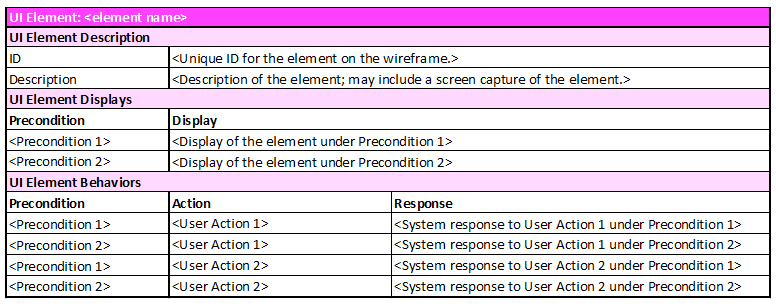The Display-Action-Response (DAR) model is an RML systems model that enables you to systematically document the valid ways in which the system displays the screen and how the system responds to the actions that a user can take. DAR models are used to derive requirements and business rules associated with the UI. You can use them to define all possible valid actions and responses between a user and the UI elements in the system. By describing all the UI elements on a screen, you can ensure completeness of the requirements derived from the UI. The Display-Action-Response model is composed of a combination of UI screen layout and corresponding element tables. The form of the screen layout can range from a low fidelity wireframe to a high fidelity screen design. The figure below gives a template for the DAR Model.


For more requirements templates, visit Requirements Modeling Language.
Learn more about requirements models in our book Visual Models for Software Requirements (Microsoft Press, 2012) Joy Beatty and Anthony Chen. (See Chapter 15 for Display-Action-Response)

